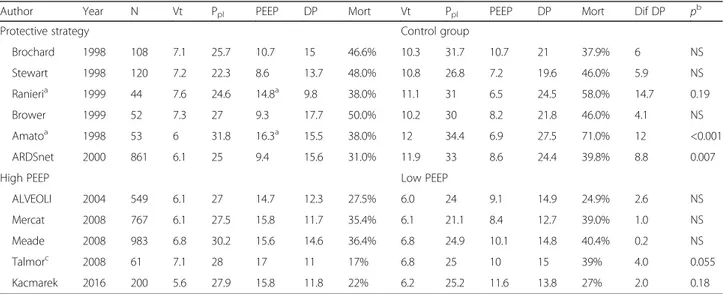Driving pressure : a marker of severity, a safety limit, or a goal for mechanical ventilation?
Texto completo
Figure




Documento similar
The general idea of the language is to “thread together,” so to speak, existing systems that parse and analyze single web pages into a navigation procedure spanning several pages of
No obstante, como esta enfermedad afecta a cada persona de manera diferente, no todas las opciones de cuidado y tratamiento pueden ser apropiadas para cada individuo.. La forma
Clinical information system (CIS); Intensive care unit (ICU); Predicted body weight (PBW); Acute respiratory distress syndrome (ARDS); Tidal volume (TV); Mechanical ventilation
The numerical and laboratorial simulation experiments based on U-type ventilation system and U+L-type ventilation system are performed respectively, and both of
the use of pooled data from four studies: two involving patients undergoing hemodialysis (the Efficacy and Safety of Peg in es a tide for the Main- tenance Treatment of
The paper’s novelties include: (i) a mathematical treatment of fragments and a seaming mechanism of proxies to enable inter-fragment referencing, (ii) fragmentation strategies,
In particular, chelate or intramolecular cooperativity is responsible for the assembly of closed, cyclic structures in competition with open, linear oligomers, and it can
However, the KAOS proposal does not provide a specific process for dealing with safety goals in the context of safety requirement specifications, nor does it consider factors such